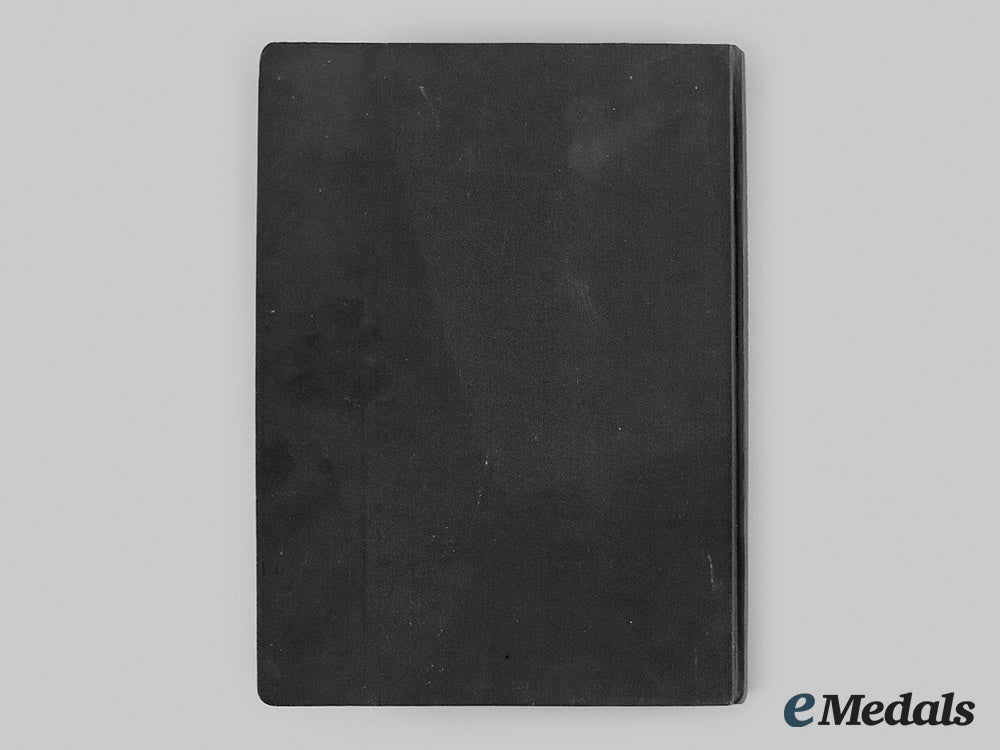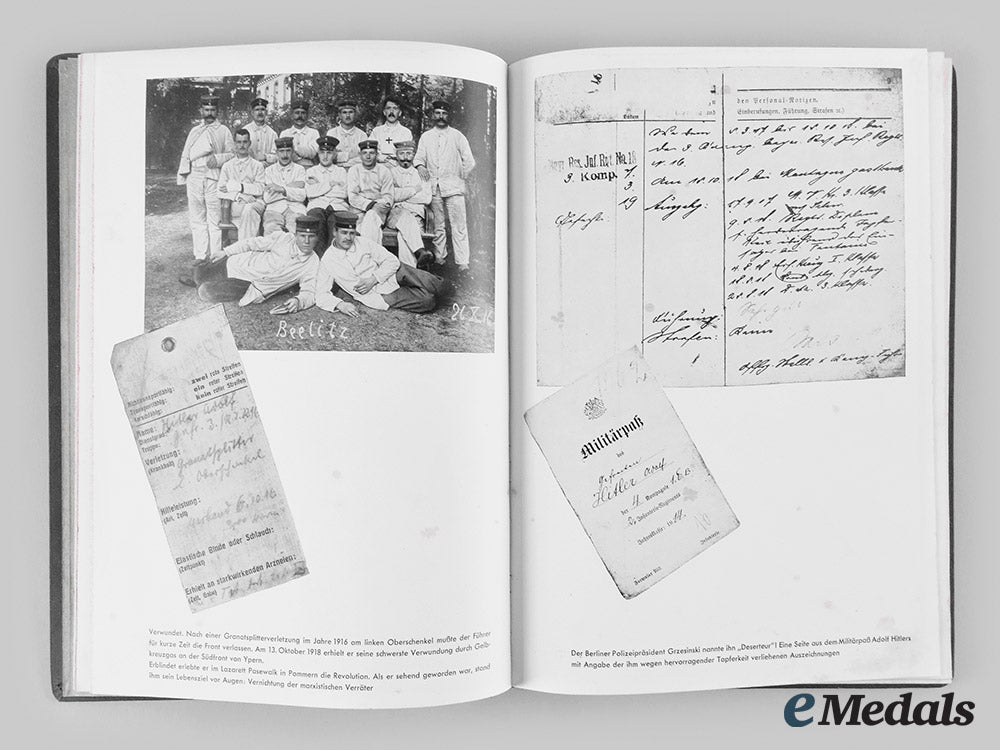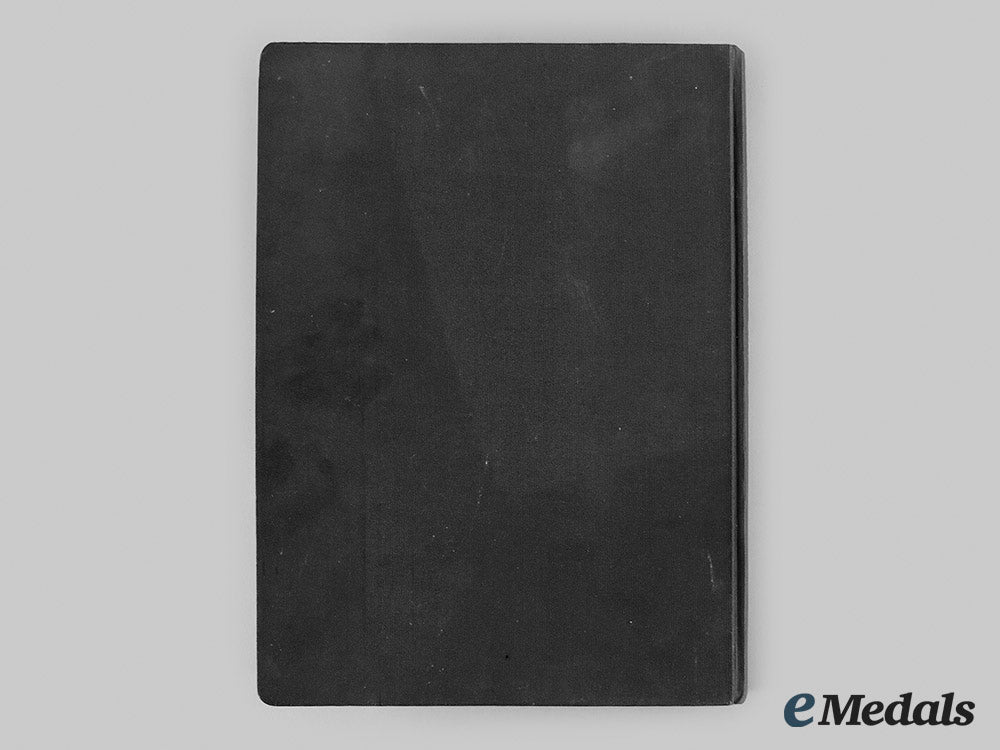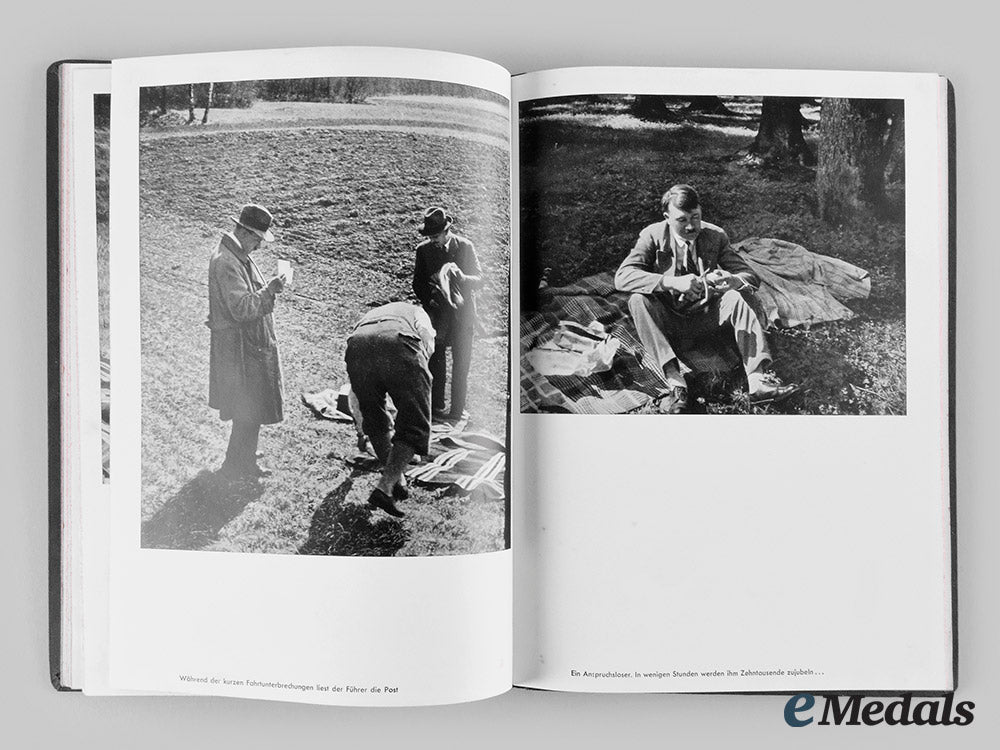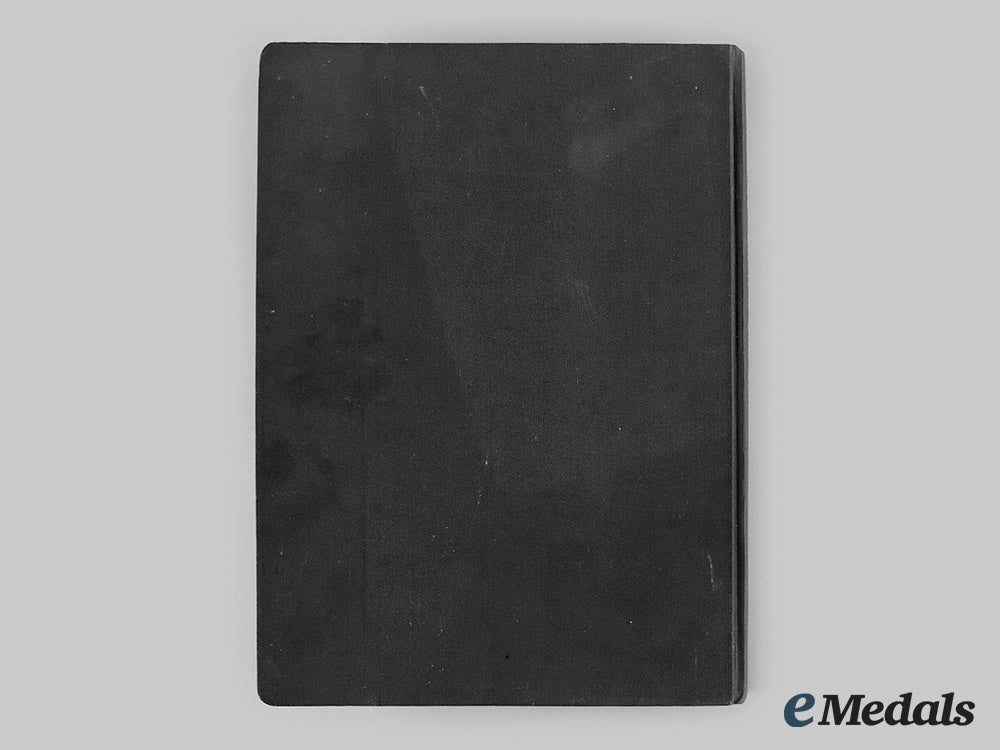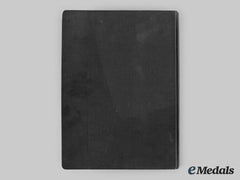
LOADING ...
In response to evolving domestic opinion, eMedals Inc has made the conscious decision to remove the presentation of German Third Reich historical artifacts from our online catalogue. For three decades, eMedals Inc has made an effort to preserve history in all its forms. As historians and researchers, we have managed sensitive articles and materials with the greatest of care and respect for their past and present social context. We acknowledge the growing sentiments put forth by the Canadian public and have taken proactive actions to address this opinion.
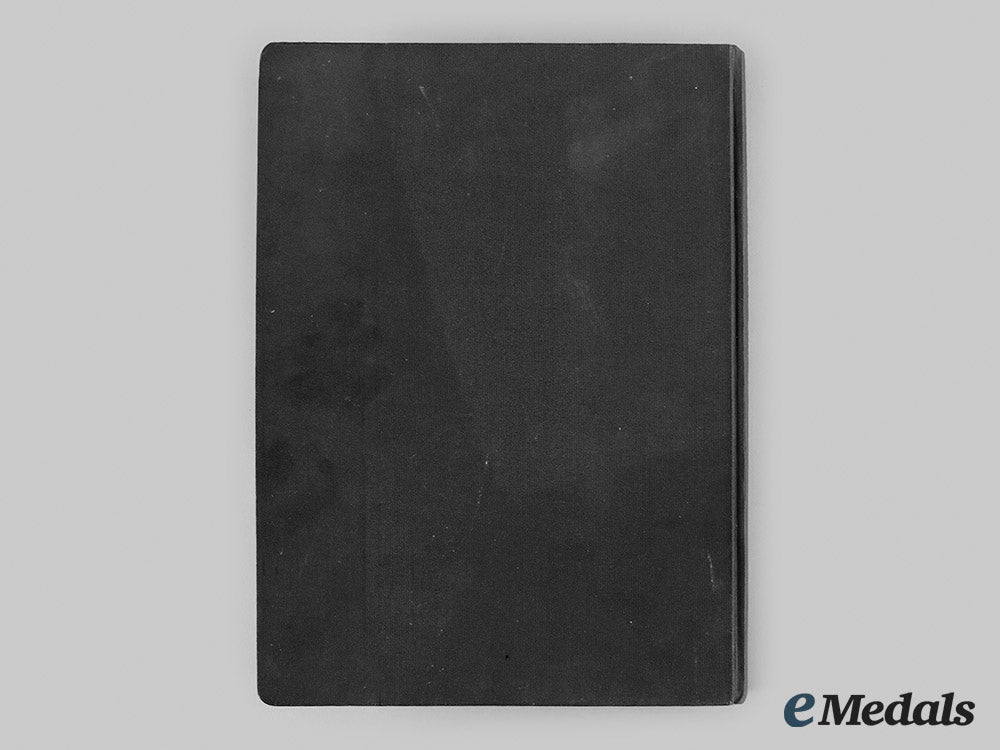
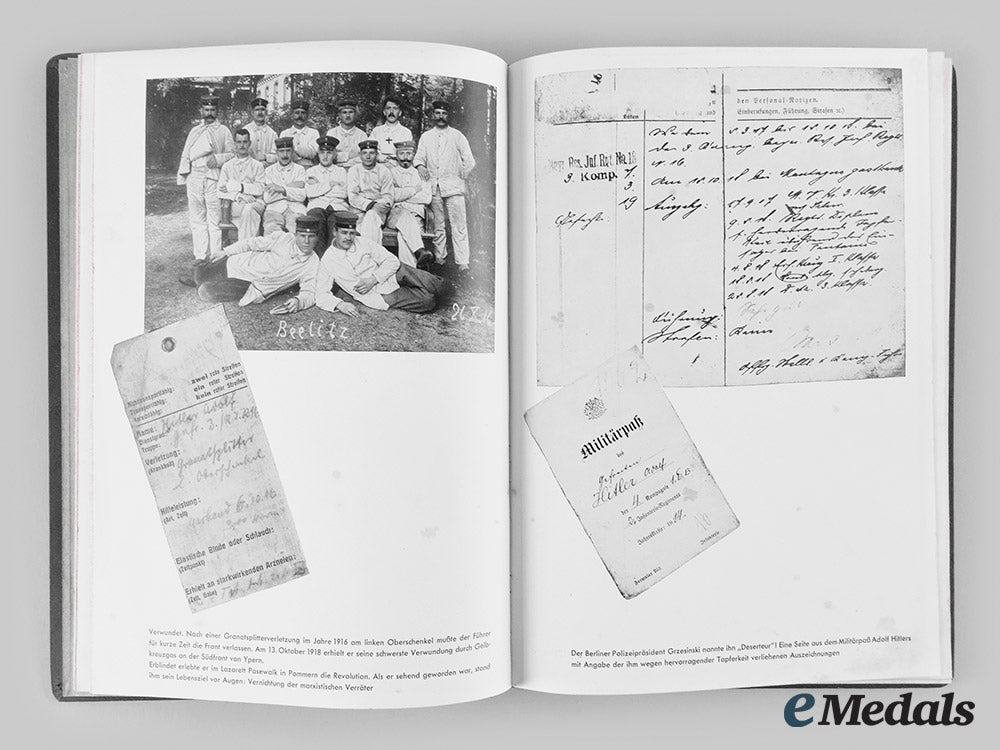
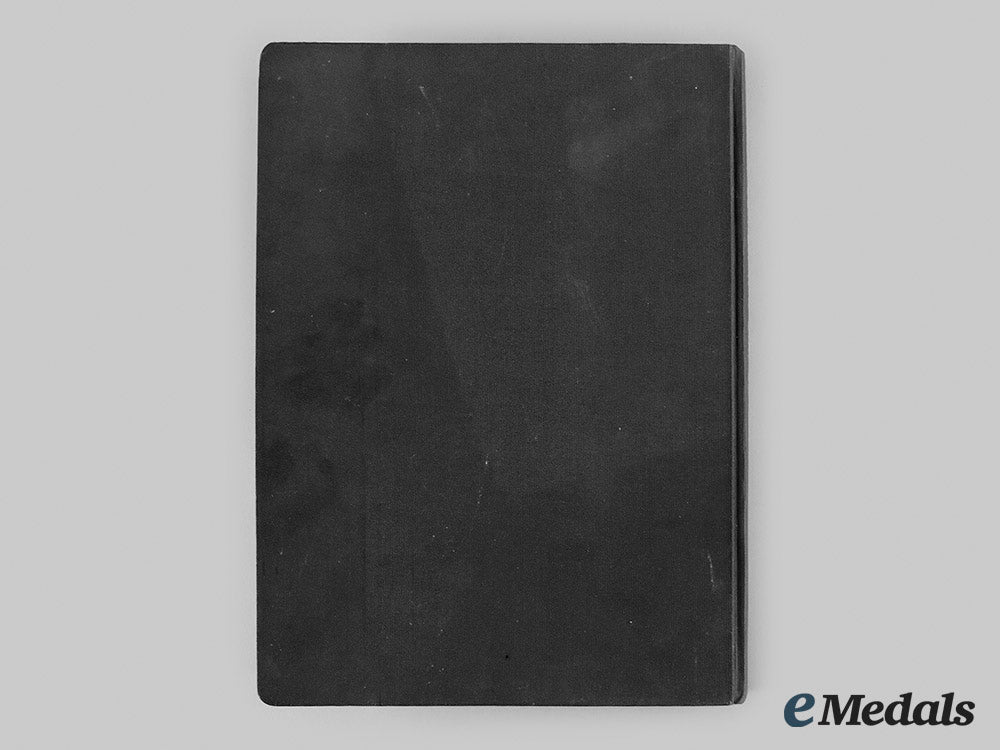
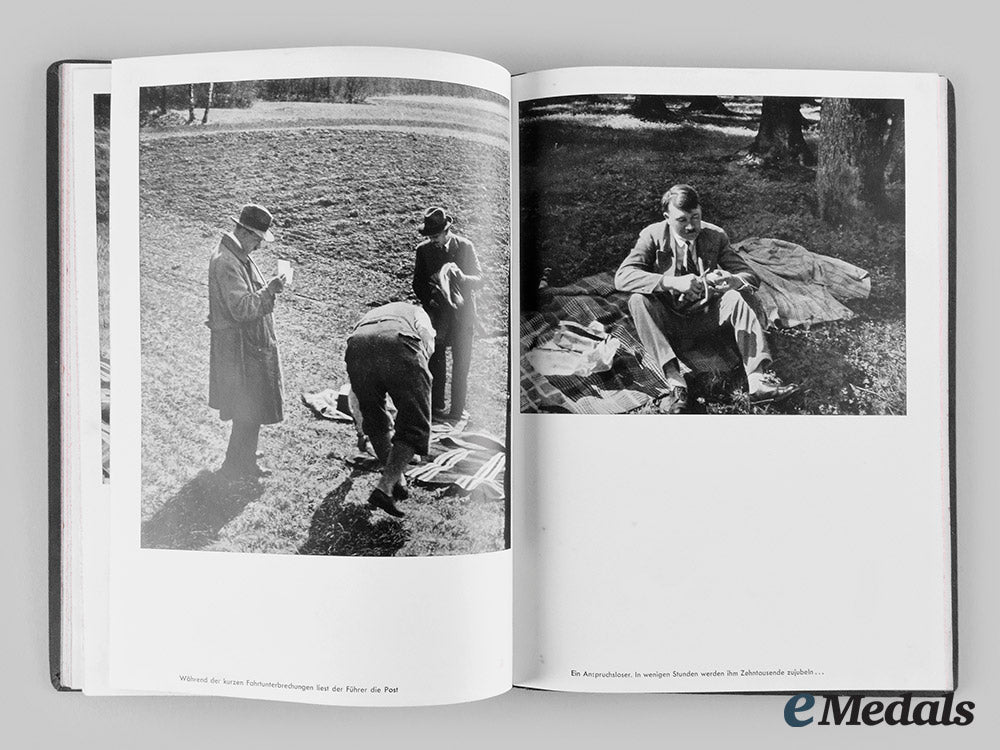
Germany, Nsdap. A 1938 Edition Of “H. Wie Ihn Keiner Kennt”, From The Library Of Ss-Obergruppenführer Arthur Seyss-Inquart
Germany, Nsdap. A 1938 Edition Of “H. Wie Ihn Keiner Kennt”, From The Library Of Ss-Obergruppenführer Arthur Seyss-Inquart
SKU: ITEM: G45746
Current Bid:
Your Max Bid:
Bid History:
Time Remaining:
Couldn't load pickup availability
Shipping Details
Shipping Details
eMedals offers rapid domestic and international shipping. Orders received prior to 12:00pm (EST) will be shipped on the same business day.* Orders placed on Canadian Federal holidays will be dispatched the subsequent business day. Courier tracking numbers are provided for all shipments. All items purchased from eMedals can be returned for a full monetary refund or merchandise credit, providing the criteria presented in our Terms & Conditions are met. *Please note that the addition of a COA may impact dispatch time.
Shipping Details
eMedals offers rapid domestic and international shipping. Orders received prior to 12:00pm (EST) will be shipped on the same business day.* Orders placed on Canadian Federal holidays will be dispatched the subsequent business day. Courier tracking numbers are provided for all shipments. All items purchased from eMedals can be returned for a full monetary refund or merchandise credit, providing the criteria presented in our Terms & Conditions are met. *Please note that the addition of a COA may impact dispatch time.
Description
Description
(H. wie ihn Keine Kennt). A 1938 edition of Heinrich Hoffmann’s “H. wie ihn Keiner Kennt” (“H. as No One Knows”), constructed of a card stock binding with a dark green canvas exterior, the spine bearing a white inscription of “H. WIE IHN KEINER KENNT”, the interior of the cover retains a label bearing an inscription of “UNSER BUCH, ARTHUR UND GERTRUD SEYß-INQUART” (“OUR BOOK, ARTHUR AND GERTRUD SEYß-INQUART”) indicating that the book was retrieved from the personal library of SS-Obergruppenführer Arthur Seyss-Inquart, the interior with non-paginated glossed paper stock pages bearing photographs of the life and career of AH from childhood until taking office, assembled by official photographer Heinrich Hoffmann and with a forward by HJ leader Baldur von Schirach, published in 1938 by Zeitgeschichte-Verlag, Berlin, measuring 200 mm (w) x 272 mm (h), the book is missing its dust jacket and bending is evident to the card stock cover, in overall better than very fine condition.
Footnote: Arthur Seyß-Inquart was born on July 22, 1892 in the village of Stannern (present-day Stonařov, southern Czech Republic) near the town of Iglau (Jihlava). This was a German speaking community within a Czech dominated area in Moravia, at the time part of the Austro-Hungarian empire. The family moved to Vienna in 1907.
Seyß-Inquart began to study law at the university of Vienna, and earned his degree during the First War in 1917 while recovering from being wounded. As a soldier in the Austro-Hungarian army he saw action in Russia, Romania, and Italy. He received several bravery decorations and at the end of the war held the rank of Oberleutnant (first lieutenant).
After the war, Seyß-Inquart developed close ties with several right wing and fascist organisations, among them the Vaterländische Front (Fatherland Front). He became a successful lawyer and had his own practice since 1921. In 1933, Seyß-Inquart went into Austrian politics and joined the cabinet of chancellor Engelbert Dollfuß.
Through growing influence and support by non other than A.H. himself, Seyß-Inquart eventually became Austrian Minister of the Interior in February of 1938. With the looming annexation of Austria by Germany in March of the same year, Austrian chancellor Schuschnigg stepped down. Seyß-Inquart was chosen as his successor due to immense pressure applied on the Austrian government by the NSDAP.
He served in this position for less than two days, until the Anschluss was completed. Seyß-Inquart signed the documents that legalised the annexation of Austria by Germany. After his office had ceased to exist, he was named Reichsstatthalter (Reich Governor) of the Ostmark, the newly created province that Austria had become as part of Greater Germany.
Being a fanatical anti-Semite, Seyß-Inquart almost immediately ordered the confiscation of Jewish property and had the Austrian Jews sent to concentration camps. He received the honorary SS rank of Gruppenführer in May of 1939, and would go on to become an SS-Obergruppenführer in 1941.
After the attack on Poland at the beginning of the Second War, Seyß-Inquart was named deputy to Hans Frank, the General Governor of occupied Poland. He supported Frank in the deportation of Polish Jews. Seyß-Inquart was also aware of the systematic murder of Polish intellectuals by the German secret service “Abwehr”.
In May of 1940, A.H. named Seyß-Inquart Reich Commissioner of the Netherlands. His policies concerning the Dutch Jews were no different than his policies had been concerning the Jews in Austria and Poland, in that they were ousted from governmental, and leading press and industry positions, their property seized, before being sent to concentration camps. Of the 140,000 Jews that were registered in the Netherlands in 1941, only 30,000 survived the war.
During his reign of terror, Seyß-Inquart also authorized the execution of at least 800 people, ranging from political prisoners to resistance fighters. At the end of the war, he was arrested by Allied forces and became one of the 24 defendants during the Nuremberg trials against the major war criminals. Seyß-Inquart was found guilty in three out of four charges and executed by hanging on October 16, 1946.
Shipping Footnote: Please note that there will be an additional shipping charge during or post time of purchase.
Description
(H. wie ihn Keine Kennt). A 1938 edition of Heinrich Hoffmann’s “H. wie ihn Keiner Kennt” (“H. as No One Knows”), constructed of a card stock binding with a dark green canvas exterior, the spine bearing a white inscription of “H. WIE IHN KEINER KENNT”, the interior of the cover retains a label bearing an inscription of “UNSER BUCH, ARTHUR UND GERTRUD SEYß-INQUART” (“OUR BOOK, ARTHUR AND GERTRUD SEYß-INQUART”) indicating that the book was retrieved from the personal library of SS-Obergruppenführer Arthur Seyss-Inquart, the interior with non-paginated glossed paper stock pages bearing photographs of the life and career of AH from childhood until taking office, assembled by official photographer Heinrich Hoffmann and with a forward by HJ leader Baldur von Schirach, published in 1938 by Zeitgeschichte-Verlag, Berlin, measuring 200 mm (w) x 272 mm (h), the book is missing its dust jacket and bending is evident to the card stock cover, in overall better than very fine condition.
Footnote: Arthur Seyß-Inquart was born on July 22, 1892 in the village of Stannern (present-day Stonařov, southern Czech Republic) near the town of Iglau (Jihlava). This was a German speaking community within a Czech dominated area in Moravia, at the time part of the Austro-Hungarian empire. The family moved to Vienna in 1907.
Seyß-Inquart began to study law at the university of Vienna, and earned his degree during the First War in 1917 while recovering from being wounded. As a soldier in the Austro-Hungarian army he saw action in Russia, Romania, and Italy. He received several bravery decorations and at the end of the war held the rank of Oberleutnant (first lieutenant).
After the war, Seyß-Inquart developed close ties with several right wing and fascist organisations, among them the Vaterländische Front (Fatherland Front). He became a successful lawyer and had his own practice since 1921. In 1933, Seyß-Inquart went into Austrian politics and joined the cabinet of chancellor Engelbert Dollfuß.
Through growing influence and support by non other than A.H. himself, Seyß-Inquart eventually became Austrian Minister of the Interior in February of 1938. With the looming annexation of Austria by Germany in March of the same year, Austrian chancellor Schuschnigg stepped down. Seyß-Inquart was chosen as his successor due to immense pressure applied on the Austrian government by the NSDAP.
He served in this position for less than two days, until the Anschluss was completed. Seyß-Inquart signed the documents that legalised the annexation of Austria by Germany. After his office had ceased to exist, he was named Reichsstatthalter (Reich Governor) of the Ostmark, the newly created province that Austria had become as part of Greater Germany.
Being a fanatical anti-Semite, Seyß-Inquart almost immediately ordered the confiscation of Jewish property and had the Austrian Jews sent to concentration camps. He received the honorary SS rank of Gruppenführer in May of 1939, and would go on to become an SS-Obergruppenführer in 1941.
After the attack on Poland at the beginning of the Second War, Seyß-Inquart was named deputy to Hans Frank, the General Governor of occupied Poland. He supported Frank in the deportation of Polish Jews. Seyß-Inquart was also aware of the systematic murder of Polish intellectuals by the German secret service “Abwehr”.
In May of 1940, A.H. named Seyß-Inquart Reich Commissioner of the Netherlands. His policies concerning the Dutch Jews were no different than his policies had been concerning the Jews in Austria and Poland, in that they were ousted from governmental, and leading press and industry positions, their property seized, before being sent to concentration camps. Of the 140,000 Jews that were registered in the Netherlands in 1941, only 30,000 survived the war.
During his reign of terror, Seyß-Inquart also authorized the execution of at least 800 people, ranging from political prisoners to resistance fighters. At the end of the war, he was arrested by Allied forces and became one of the 24 defendants during the Nuremberg trials against the major war criminals. Seyß-Inquart was found guilty in three out of four charges and executed by hanging on October 16, 1946.
Shipping Footnote: Please note that there will be an additional shipping charge during or post time of purchase.



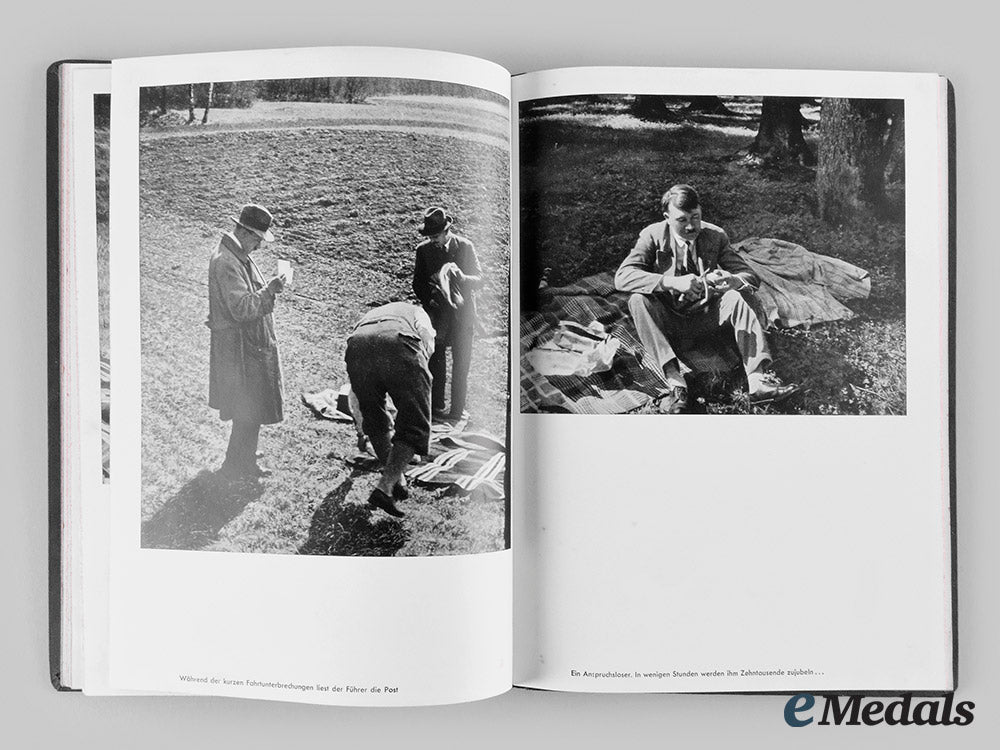
You May Also Like
Germany, Third Reich. A Mixed Lot of Tyrolean Marksmanship Badges
G52930
Germany, SS. An Estonian Waffen-SS Volunteer’s Sleeve Shield
G50381
Germany, SS. A Waffen-SS Sturmmann Sleeve Insignia
G52846
Germany, Third Reich; Slovakia, First Republic. A Mixed Lot of Wartime Postcards
G52905
Germany, Third Reich. A Pair of Tyrolean Marksmanship Badges
G52981
-
Germany, Third Reich. A Mixed Lot of Tyrolean Marksmanship Badges
G52930
Add to CartRegular price $135 USDRegular price $0 USD Sale price $135 USDUnit price / per -
Germany, SS. An Estonian Waffen-SS Volunteer’s Sleeve Shield
G50381
Add to CartRegular price $150 USDRegular price $0 USD Sale price $150 USDUnit price / per -
Germany, SS. A Waffen-SS Sturmmann Sleeve Insignia
G52846
Add to CartRegular price $135 USDRegular price $0 USD Sale price $135 USDUnit price / per -
Germany, Third Reich; Slovakia, First Republic. A Mixed Lot of Wartime Postcards
G52905
Add to CartRegular price $135 USDRegular price $0 USD Sale price $135 USDUnit price / per -
Germany, Third Reich. A Pair of Tyrolean Marksmanship Badges
G52981
Add to CartRegular price $135 USDRegular price $0 USD Sale price $135 USDUnit price / per
Do you have a similar item you are interested in selling?
Please complete the form and our client care representatives will contact you.
Sell Item